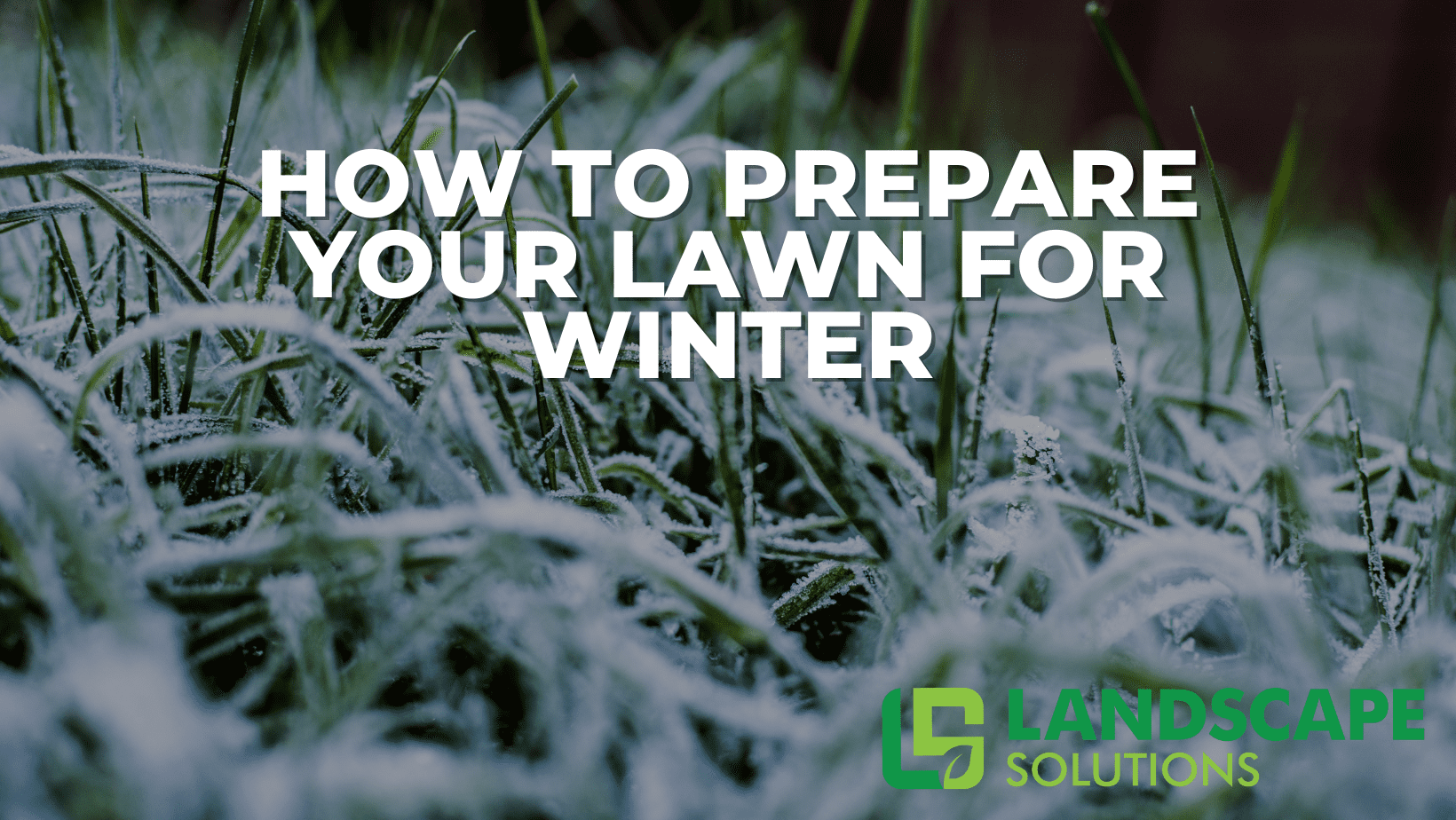
At Landscape Solutions, we know that preparing your lawn for winter is essential to maintaining its health and appearance year-round. As cooler temperatures set in and winter weather approaches, taking proactive steps can ensure your lawn thrives when spring returns. Proper winter preparation not only protects your grass from seasonal damage but also reduces the time and effort needed to restore its vibrancy in the spring. Follow this comprehensive guide to get your lawn ready for winter, ensuring it stays healthy and green next year.
Aerate Your Lawn for Better Root Health
One of the first steps in preparing your lawn for winter is aeration. Aerating involves perforating the soil with small holes to improve air circulation, water absorption, and nutrient delivery to the roots. Over time, lawns can become compacted, which restricts healthy root growth. Fall is the perfect time to aerate, as it allows the grass to recover before the ground freezes.
At Landscape Solutions, we recommend core aeration, which removes small plugs of soil, creating space for roots to grow deeper. This promotes better resilience against cold temperatures and helps your lawn absorb any late-season fertilization.
Apply a Winter Fertilizer
Fertilizing in the fall provides essential nutrients that support your lawn during the dormant winter months. A slow-release fertilizer with a balanced formula high in potassium can strengthen your grass and enhance its ability to withstand freezing temperatures. Potassium boosts root development and improves overall turf resilience.
At Landscape Solutions, we understand that different lawns require specific care. That’s why we carefully assess your lawn’s needs and recommend the right fertilizer formula to prepare it for winter. By feeding your grass properly, you ensure it wakes up healthy and lush when warmer weather returns.
Mow One Last Time (But Not Too Short)
As the growing season winds down, it’s important to mow your lawn a few more times before winter arrives. However, avoid cutting the grass too short—scalping the lawn can leave it more vulnerable to frost damage. For the final cut of the season, we suggest mowing your lawn to about 2 to 2.5 inches in height.
This height helps prevent disease by allowing adequate airflow while minimizing stress on the grass. Cutting too short can expose the crown of the grass, making it susceptible to harsh winter conditions. Landscape Solutions’ lawn care experts can ensure your grass is properly trimmed before winter sets in.
Rake and Remove Leaves Regularly
While autumn leaves may look beautiful scattered across your lawn, leaving them to accumulate can cause problems. A thick layer of leaves can block sunlight, trap moisture, and lead to fungal diseases, such as snow mold. Regularly raking and removing leaves throughout the fall helps your grass stay healthy.
Landscape Solutions offers leaf removal services to make your lawn maintenance easier. Clearing leaves not only keeps your grass in good shape but also enhances the appearance of your yard through the changing seasons.
Overseed Thin or Patchy Areas
If you’ve noticed bare spots or thinning areas on your lawn, fall is the ideal time to overseed. Overseeding introduces new grass varieties, filling in sparse areas and promoting a thick, uniform turf. The cooler temperatures and increased moisture in fall provide the perfect conditions for seed germination.
At Landscape Solutions, we carefully select high-quality grass seed varieties that thrive in your region and complement your existing turf. Overseeding ensures a dense lawn that can better withstand winter stress and outcompete weeds in the spring.
Water Before the First Freeze
Even as temperatures drop, your lawn still needs water to stay healthy. Be sure to water deeply leading up to the first freeze, as this helps your grass store moisture and nutrients in preparation for dormancy. Once the ground freezes, you can stop watering, as the grass will no longer absorb moisture.
Our team at Landscape Solutions can help you time your watering schedule perfectly based on your area’s weather patterns. We also offer irrigation system winterization to prevent damage from frozen pipes during the cold months.
Protect Your Lawn with a Layer of Mulch
In areas with extreme cold or snow, adding a layer of mulch can provide extra insulation for your lawn. Mulch helps regulate soil temperature, preventing it from freezing and thawing too frequently, which can damage grass roots. It also reduces water loss, keeping your lawn hydrated throughout the winter.
Landscape Solutions can apply the right type of mulch to give your lawn an added layer of protection. This simple step ensures that your grass stays healthy beneath the surface, ready to grow once spring arrives.
Keep Foot Traffic to a Minimum
During winter, it’s essential to minimize foot traffic on your lawn. Walking on frozen or dormant grass can cause compaction and damage delicate blades, leading to patchy areas in the spring. If possible, designate specific paths or walkways to prevent unnecessary wear and tear on your turf.
At Landscape Solutions, we recommend installing stepping stones or pavers to guide foot traffic during the winter months. This small addition can protect your lawn while enhancing the overall aesthetic of your landscape.
Contact Landscape Solutions for your Landscaping Needs
At Landscape Solutions, we take pride in providing expert lawn care management to keep your outdoor spaces looking beautiful year-round. Our team of professionals knows exactly what your lawn needs to thrive through winter and come back stronger in the spring.
Don’t leave your lawn’s health to chance—contact us today at (615) 852-5009 or visit our website to schedule a consultation. Take the steps now to ensure a lush, green lawn in the spring. With Landscape Solutions by your side, your lawn will be well-prepared to endure the winter and flourish with the changing seasons. Call (615) 852-5009 today and let’s get started!



